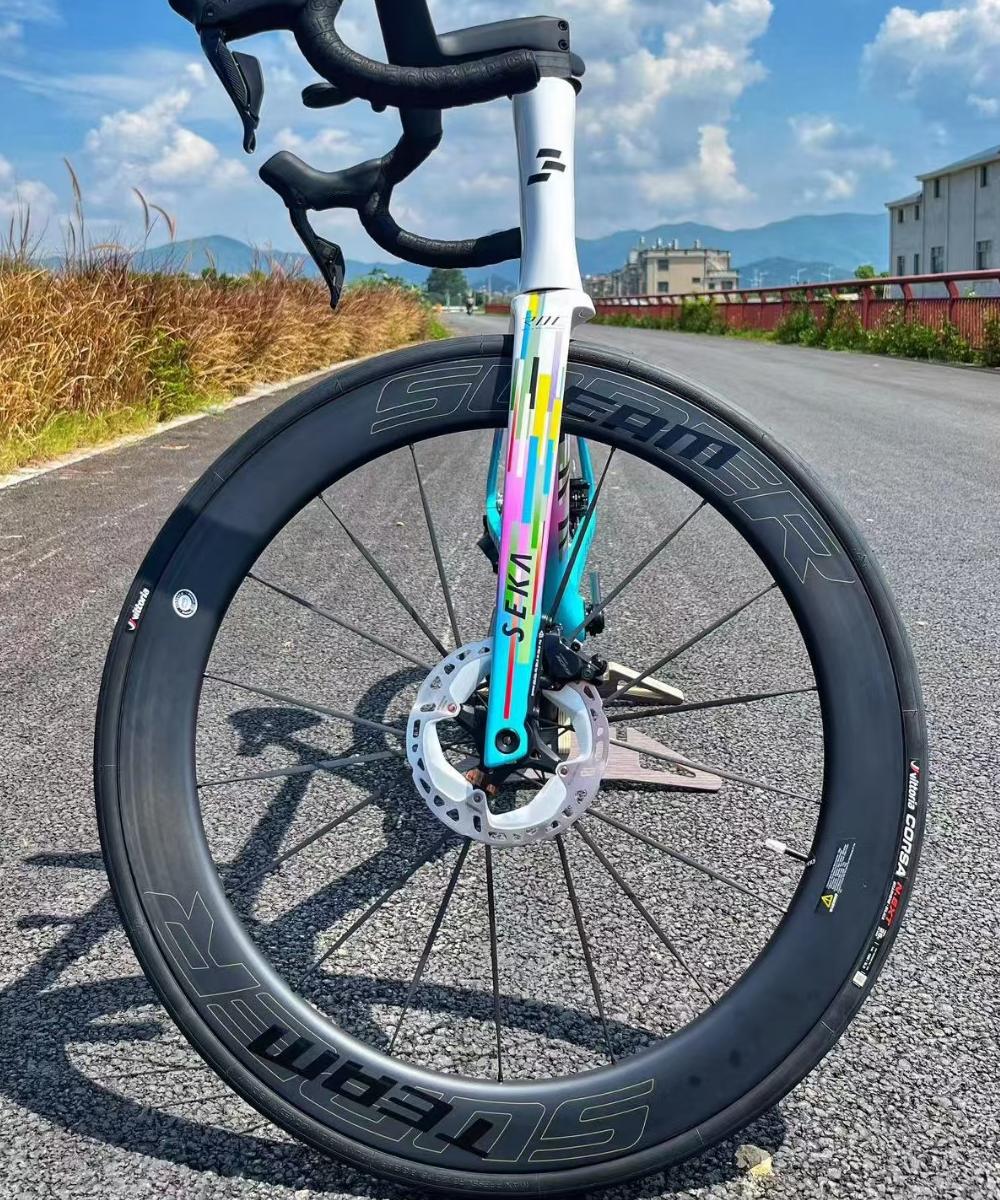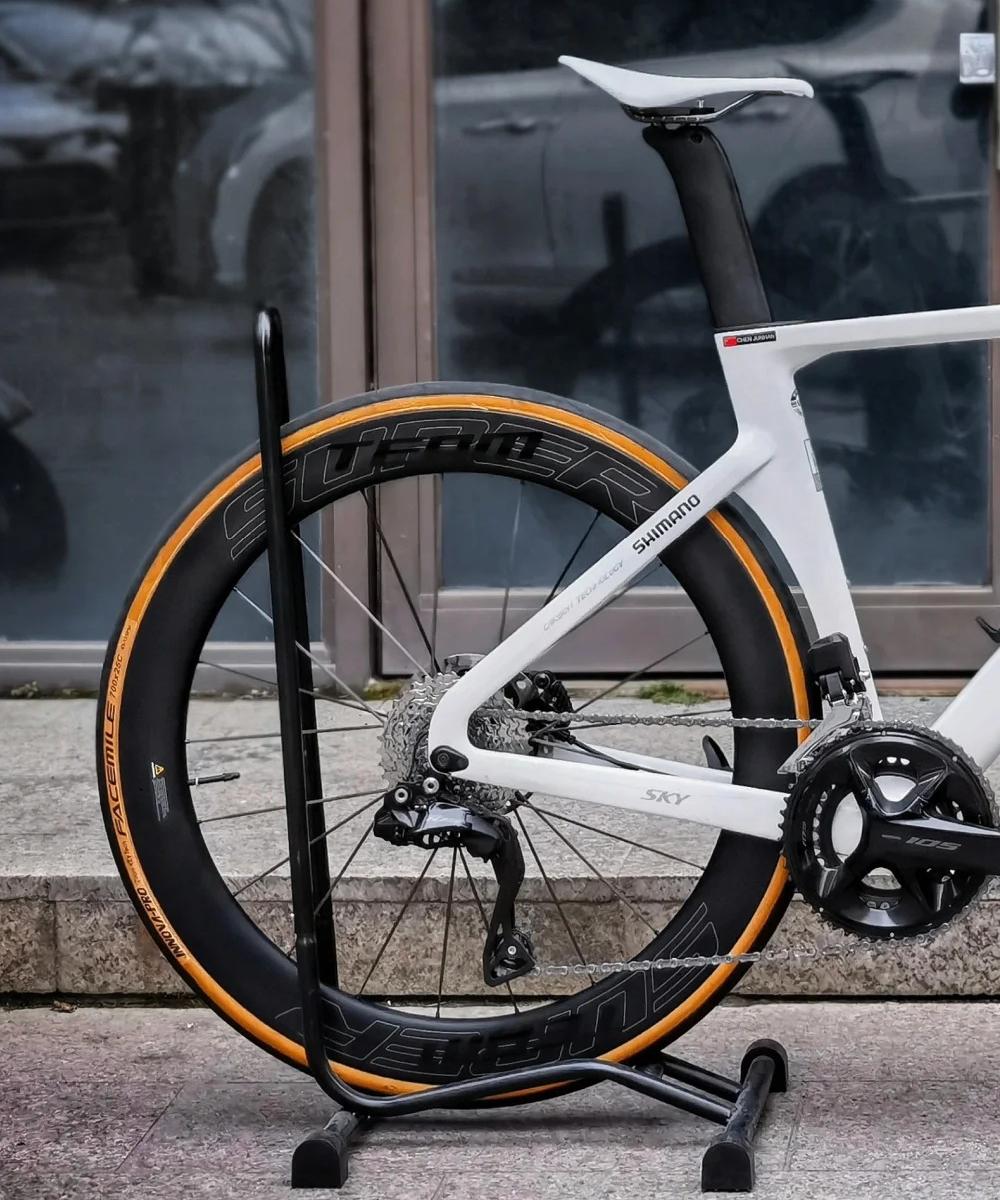Why Spoke Bracing Angle Matters for Wheel Strength and Stability
When it comes to evaluating the strength and stability of a bicycle wheelset, riders often focus on spoke count, rim depth, or hub quality. Yet one of the most critical—and often overlooked—factors is the spoke bracing angle. This geometric detail plays a fundamental role in how a wheel resists lateral and torsional forces during riding, especially under load, sprinting, or aggressive cornering.
In this article, we’ll explain what spoke bracing angle is, how it affects your wheel’s characteristics, and what to consider when choosing a wheelset with the optimal balance of stiffness, strength, and durability.
What Is Spoke Bracing Angle?
The spoke bracing angle is the angle formed between the spoke and the centerline of the wheel (or hub axle). This angle results from the hub flange spacing and the rim width. A wider spacing between the hub flanges—and a narrower rim—leads to a wider bracing angle.
Wider bracing angle: Spokes sit at a steeper angle from the hub to the rim.
Narrower bracing angle: Spokes are more vertical, closer to the hub’s centerline.
This angle differs between the drive side and non-drive side, especially on rear wheels, due to the presence of the cassette, which pushes the drive-side flange inward.
Why Bracing Angle Affects Wheel Strength
Lateral Stiffness
A wheel with a wider bracing angle offers better resistance to side-to-side flex. This is especially important when cornering hard or sprinting out of the saddle.
Narrow bracing angles make the wheel more prone to lateral flex, which can affect power transfer and stability.
Torsional Stiffness
On rear wheels, especially, a well-optimized bracing angle helps resist the twisting forces generated by pedaling torque.
This is critical in power-heavy disciplines like time trialing or climbing.
Spoke Tension Balance
A poor bracing angle, especially if asymmetric, often results in a significant tension difference between drive and non-drive side spokes.
Uneven tension increases the likelihood of spoke fatigue and breakage over time.
Key Factors That Influence Bracing Angle
Hub Flange Spacing
Wider flange spacing increases the bracing angle but must be balanced with frame compatibility.
Disc brake hubs often have asymmetric spacing, influencing both bracing angle and spoke tension.
Rim Internal Width
Wider rims reduce bracing angle slightly, as the spoke must reach further out laterally.
Dish (Rear Wheel Only)
The cassette side requires a more vertical spoke angle due to narrower spacing, which compromises tension balance unless compensated for with asymmetric rim profiles or special lacing.
Asymmetric Rims: A Modern Solution
To counteract the imbalanced bracing angles caused by hub asymmetry, many brands now offer asymmetric (offset) rims. These rims shift the spoke holes slightly toward the drive side, improving tension balance and overall wheel integrity.
What This Means for Your Wheel Choice
Climbers and Racers: Look for wheels with wider hub spacing and optimized bracing angles for maximum stiffness.
Gravel or Endurance Riders: Slightly reduced bracing angle may offer more compliance, which can improve comfort.
Heavy or Powerful Riders: Balanced spoke tension and wide bracing angles are especially important to prevent premature wheel flex or spoke failures.
Conclusion: Small Angle, Big Impact
The spoke bracing angle might not be printed on a spec sheet, but its impact on ride quality and durability is huge. When selecting your next wheelset, especially for performance riding, don’t just count spokes—consider how they’re arranged. A well-designed bracing angle can make the difference between a flexy wheel and one that inspires confidence every time you push the pedals.
If you're unsure whether a wheelset has optimal bracing angles for your riding style, consulting with the brand or looking into asymmetric designs is a good place to start—especially for carbon performance wheels.


